7 Tips to Help Prevent Scratches on Wood Floors & How to Fix Them
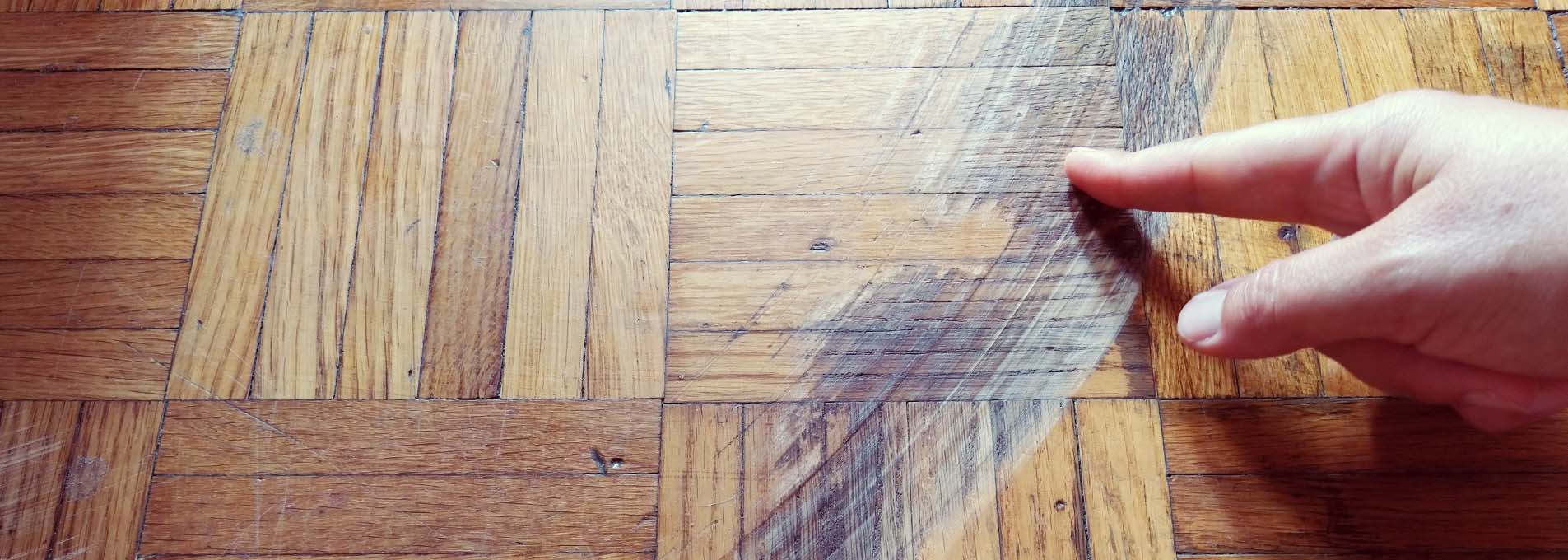
how to avoid scratches on your wood flooring
If your home has a wood floor, then scratch repair is something you’re eventually going to have to deal with, no matter how careful you are. It’s just a natural part of caring for a wooden floor and is nearly always due to dirt or grit on the floor or moving furniture around.
Depending on how bad the scratches are, there are several things you can do to repair a scratched floor. But by far the best thing you can do for your floor is to do what you can to avoid the scratches in the first place.
So here are seven ways to avoid scratches on wood flooring, together with some bonus tips on how to remove scratches from wood floors.
1) Keep Shoes Away From Wooden Floors
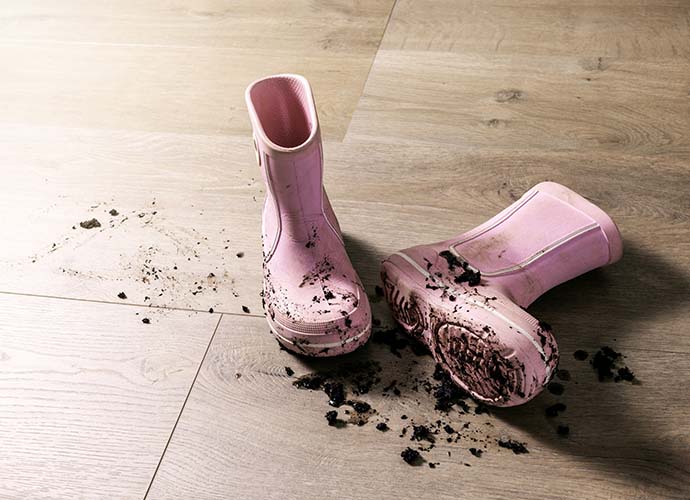
Make sure that you take off outdoor footwear before you step on your engineered or hardwood floor, and store wet or dirty footwear in a porch or cupboard away from wooden floors. It’s also important to avoid walking on your hardwood floor with spiky shoes such as golf shoes, football boots, or stiletto heels as these will cause deep scratches.
2) Put Down Mats at your Door
Placing entry mats both outside and inside your doors will help to reduce the amount of water, grit and salt that gets carried into your home. This is another major cause of damage to wooden floors.
3) Use Felt Pads Under Furniture
Moving furniture around is another common cause of scratches on wood floors, and adding felt pads to the base of chairs, tables, and sofas will help to prevent this from happening. It’s worth keeping a few extra pads on hand in case one falls off!
4) Clean Your Floors Regularly

Cleaning your floors to remove dirt and debris is one of the best ways to reduce the risk of scratches. You can use a soft brush to sweep your floor or buy a vacuum cleaner that is suitable for hardwood floors. And make sure that when you mop your floor, you remove excess water to avoid warping.
Our specialist cleaning kits for oiled wooden floors and lacquered floors are the perfect way to keep your floors free from dirt or grit.
5) Avoid Chairs with Rollers
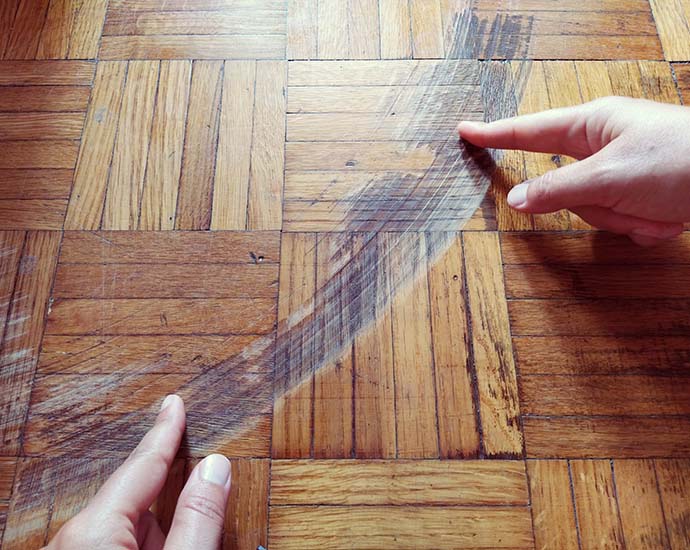
Dirt and grit can easily get caught up in chair rollers or castor wheels, so it’s best to avoid these if possible. If you do have chairs with rollers, you could either fit castor cups or place a mat under the chair to protect your hardwood floor from scratches.
6) Make Use of Mats and Rugs

Mats and rugs are a great option for protecting large areas where furniture is often moved, such as a dining room or home office. And as well as reducing damage to wood floors, they also look great and lower the noise from your wood flooring.
Rug pads placed under your rugs will further reduce the risk of scratches and help to keep your rug in place.
7) Tidy Up Outside Your Home
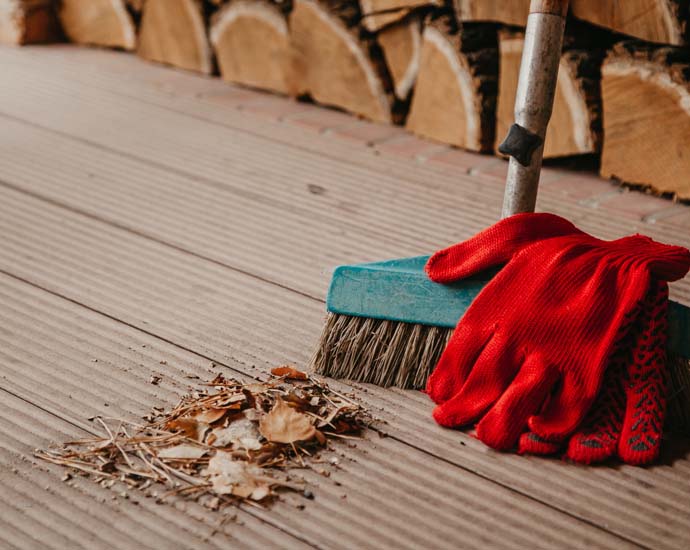
Regularly sweeping outside your home’s key entry areas will help to reduce the amount of dirt and grit that gets carried inside. This includes the areas around your front and back doors as well as your garage.
Video: How to Care for your Woodpecker Floor
Watch our video below to learn more useful tips about how to care for your Woodpecker floor.
How to Repair Scratches on Wood-Effect Laminate & Brecon Flooring
Laminate & Brecon flooring are popular flooring choices as they’re durable, easy to care for, and can look like real wood – making them a popular choice for high-traffic areas of the home (read about the differences between laminate and Brecon (Stratex) flooring on our blog). But you can’t refinish or sand laminate or Brecon flooring so ideally, you should try to protect it from damage as much as possible in the first place.
However, lightly scratched laminate and Brecon floors can be hidden using touch-up pens, crayons, or wax filler sticks, building up the colour until it matches the shade of your flooring. Unfortunately, planks that have deeper scratches or more extensive damage will need to be replaced.
The good news is, there’s a scratch repair kit that is perfect for our waterproof Brecon flooring, and it can be used to repair minor scratches on our wood-effect flooring. If you’re looking for tips on how to repair scratches on your Lynton Stratex flooring then please see the next section.
Light Scratches on Real Wood Floors
There’s a good chance that your floor will have some surface scratches at some point, but it’s fairly easy to repair these.
You can use Woodpecker Scratch Cover to quickly hide minor scratches, scuffs, and chips on your wood flooring. This wood scratch concealer comes in three shades for light, medium, or dark wood and you can build the colour up to match your flooring.
And Woodpecker Touch-up Oil is another easy way to conceal minor marks on oiled wooden floors. You simply apply the oil to the affected area with a lint-free cloth and allow it to dry before buffing gently to remove excess oil.
If the damage goes beyond the surface, you will need to sand the floor first to remove scratches from the wood flooring. Take care to use the right grade of sandpaper for your floor and rub along the grain of the wood rather than across it. Once the scratch can not be seen anymore, you can use wood scratch filler to top the rubbing and then carefully apply a matching finish.
If you own our Lynton Stratex flooring then you may be able to sand down the top layer to help conceal any light scratches and marks, however, this must only be done by hand since the wear layer is only 1mm. We recommend speaking to our dedicated team of experts before attempting to sand down your Lynton floor as advice can vary depending on the product you have. Please visit our contact page for further assistance.
Everyday Wear and Tear
Everyday damage that accumulates over the years may eventually mean that you need to buffer and recoat your hardwood floor to bring back the shine.
But if your floor has noticeable scratches across a large area, it could need to be completely sanded down and refinished. This is possible on hardwood floors and engineered floors with a wear layer that is at least 1mm thick. Woodpecker engineered wood flooring ranges all have a wear layer between 3mm and 6mm thick so can be sanded and refinished at least twice.
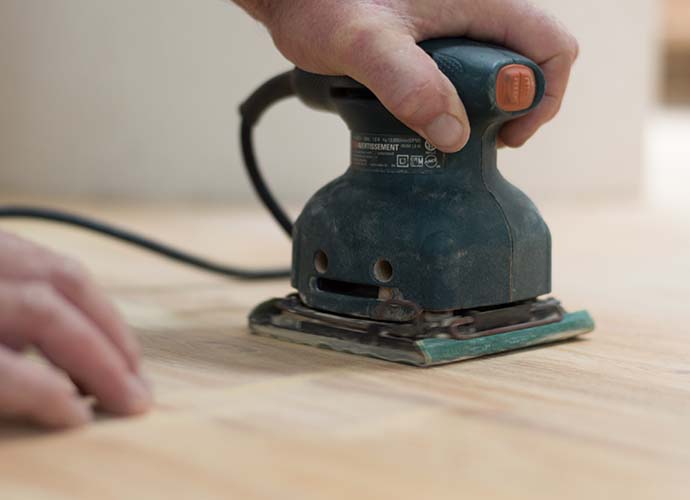
We hope that these tips help prevent your wood floor from getting scratched, but if the worst does happen, then don’t panic as with some clever products and a little TLC, you’ll soon have your wood floor looking as good as new.
Subscribe to our Inspiration Journal for monthly style, trends, and news updates, or follow us on Instagram to see gorgeous interiors right on your feed.

